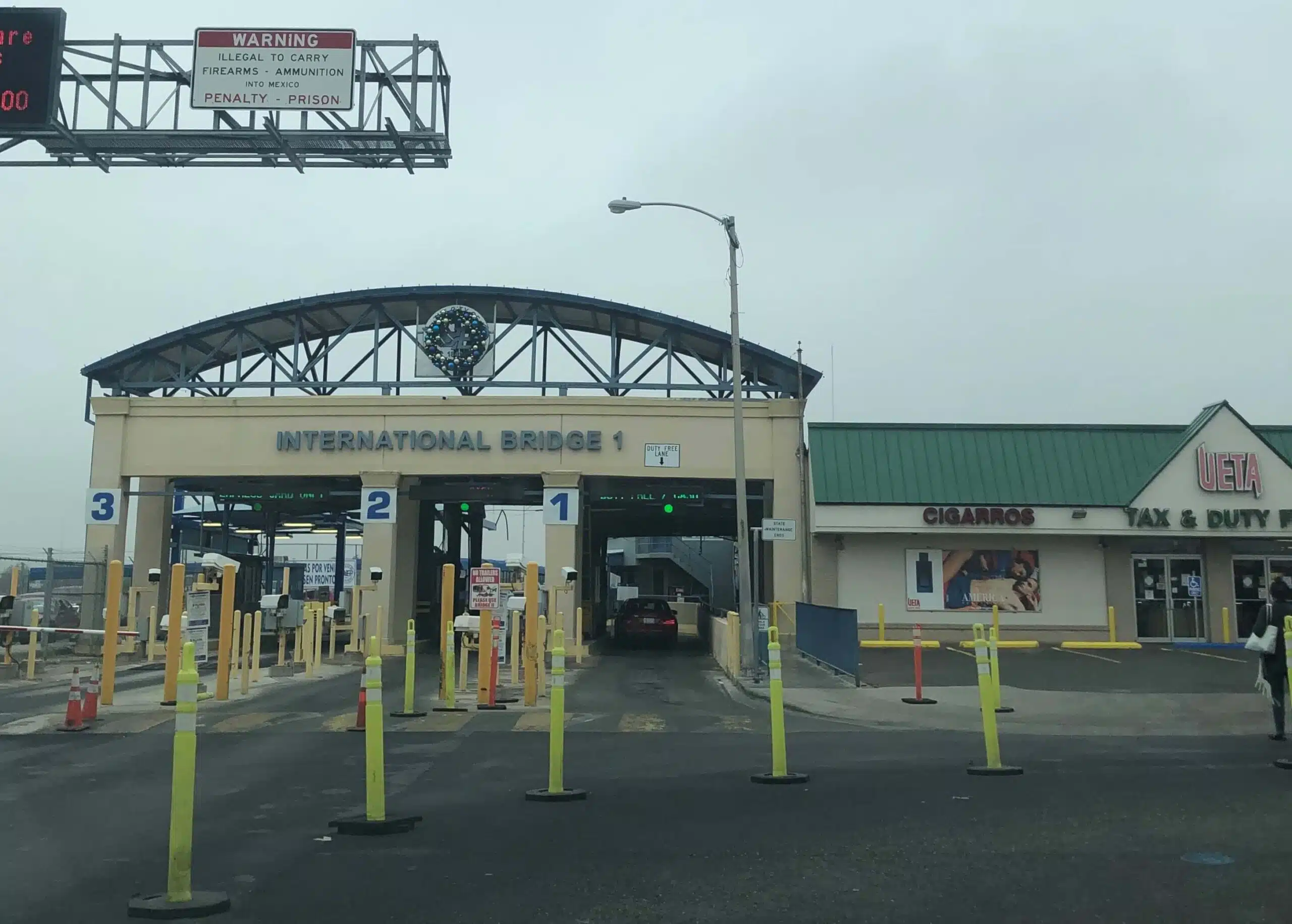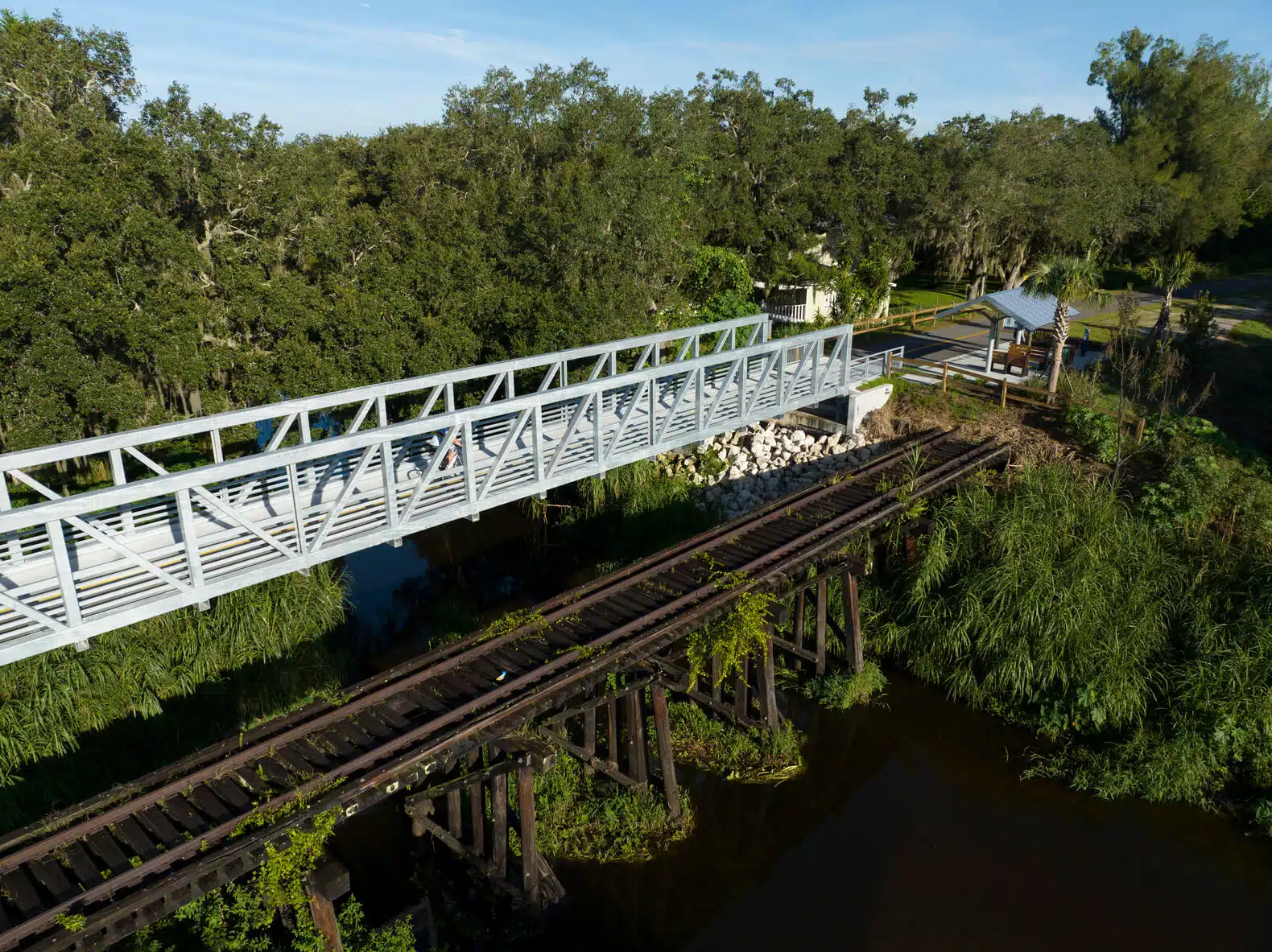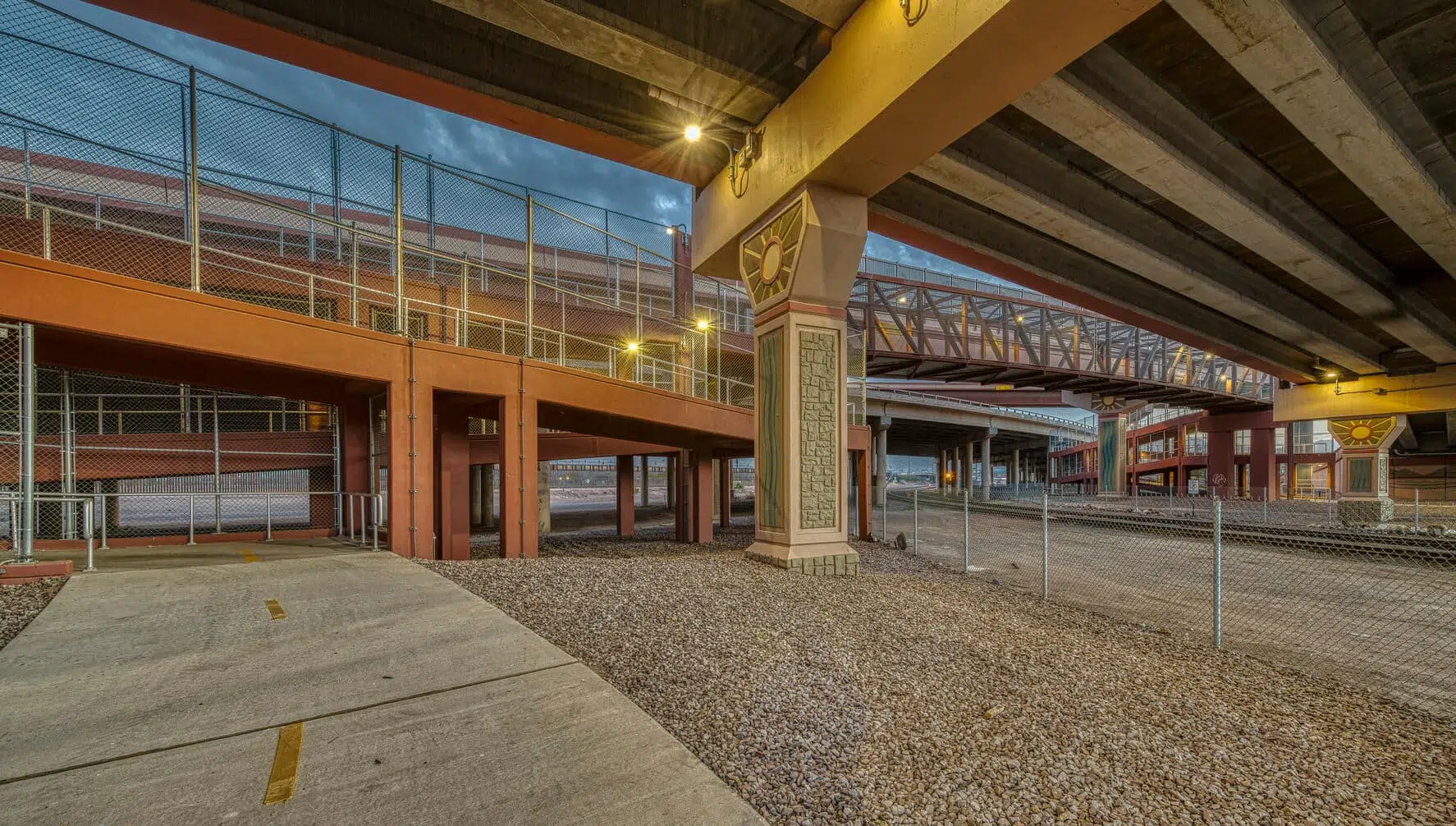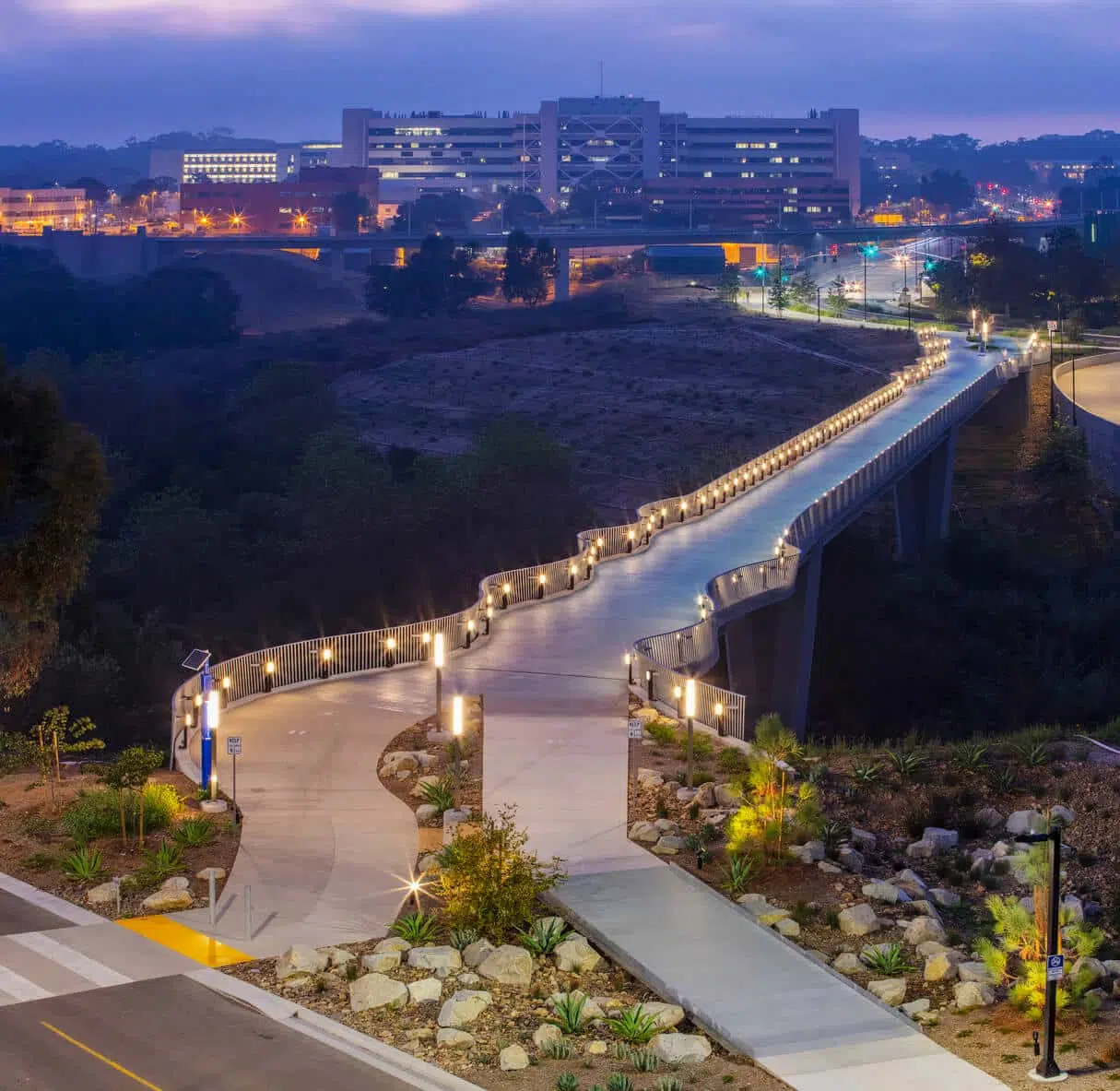TxDOT’s US 57 Corridor Interstate Feasibility Study, spanning nearly 100-miles, supports crucial trade connections across the Texas-Mexico...
Multi-agency Coordination
Led communication between multiple project stakeholders, including the City of Temple, TxDOT Design Division, TxDOT Bridge Division, TxDOT Waco District, and local railroads
Unique Design
Incorporated elements inspired by the City of Temple into the improved bridge design—such as railing and retaining wall styles—to align with the distinct characteristics and style of the city and the Lone Star State
Cost-effective Solutions
Recreated the right-of-way (ROW) boundary from Bell County required by the City of Temple for the project, streamlining the process and saving time and money
Kimley-Horn provided the Texas Department of Transportation (TxDOT) with select services to enhance a pedestrian bridge in Temple, helping to address the lack of multimodal use functions and bolstering mobility. The area surrounding the 265-foot bridge is well-traveled by bicyclists and walkers, and as the city and region have grown, so has the need for more connectivity. To support improved travel opportunities, Kimley-Horn managed plans, specifications, and estimates (PS&E) design for a shared-use path (SUP), three-span pedestrian bridge, retaining wall, and sidewalk along the upgraded bridge.
Providing Comprehensive Multimodal Services
To improve travel efficiency around the bridge, our roadway team split the project into two components—bridge coordination and sidewalk improvements—so the sidewalk updates could be completed sooner. For both elements of the project, our list of provided services included:
ADA design
PS&E
Final design
Traffic design
Agency coordination
Railroad coordination
Structural component design
Retaining wall design
Shared-use path design
Engaging Stakeholders for Key Input
Throughout the project, our team successfully led coordination between multiple stakeholders, including the City of Temple, TxDOT Design Division, TxDOT Bridge Division, and TxDOT Waco District. In fact, we held bi-weekly meetings with the different TxDOT divisions to help ensure our partners were all up to speed on planning and construction. As part of our close partnership with TxDOT, we coordinated with them and the City of Temple to align elements of the project with the City of Temple’s culture, such as the distinctive styles for retaining walls and railings.
Overcoming Unique Local Challenges
The Temple bridge improvements were federally funded through the Transportation Alternatives Set-Aside grant, though no funding was available for a ROW boundary survey. To get around this hurdle, our team obtained Bell County’s as-built ROW maps to identify areas with limited ROW and looked at appraisal district line work that showed property boundaries. From there, we pulled in Bell County’s parcel GIS to recreate their ROW boundary, which saved time and money.
Our team also discovered a culvert crossing that was constrained by a culvert headwall and guard fence, with a curb cut allowing open drainage from the road to flow over the headwall. To address this, we designed a system that added armored curb with grate and frames for drainage conveyance. This met Public Right-of-Way Accessibility Guidelines minimum clear space requirements by replacing the guard fence with pedestrian rail.
Additionally, we coordinated with TxDOT Waco District and with Burlington Northern Santa Fe Railroad and Belton Railroad to address both an at-grade and overpass crossing that needed track reconstruction. Our team created a temporary path across the rail crossing using asphalt, which fulfilled ADA compliance guidelines and saved time.
Construction on the upgraded bridge was completed in 2022, with the enhancements to the bridge and the SUP, retaining wall, and sidewalk already improving mobility for residents and visitors in the greater Temple area.




